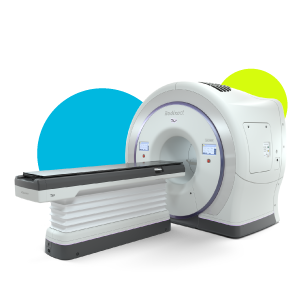Each day a person takes approximately 22,000 breaths, that is about 7.5 million breaths each year. But we don’t even think about it, until of course something isn’t quite right.
One of the first signs of lung cancer can be shortness of breath, the degree to which is subjective per person. Facing cancer treatment can be a frightening time. From uncertainties in the treatment journey to the sheer lack of control, it is enough to make anyone feel completely distraught. For many patients with medically inoperable non-small cell lung cancer (NSCLC) definitive radiation therapy, preferably stereotactic body radiation therapy (SBRT) is offered as a treatment option.
The importance of delivering radiation therapy accurately
When it comes to radiation therapy it is vital that the beam is delivered to the exact planned target volume (PTV) to help minimize dose to normal lung tissue. This helps to keep side effects as low as possible so as not to compromise patients’ quality of life. But trying to deliver radiation to a moving target is by no means easy. It is also extremely difficult for patients to keep perfectly still as radiotherapy is delivered.
Strategies used to control motion
Every day in thousands of clinics around the world incredible radiotherapy treatment plans are generated by very talented dosimetrists and medical physicists. But the reality is that these elaborate plans are created on static images and then delivered to a moving target.
There are several ways to help improve the reproducibility of your plan, from using restrictive immobilization devices, or creating an internal target volume (ITV) that encompasses the entire movement of the lesion during breathing, to daily pretreatment images. However, while external devices may keep the patient still on the outside, they do little to control what is going on inside. And, larger margins may encompass the entire treatment area but they also treat a lot more normal tissue too.
Pretreatment images are also essential in any treatment, though again they are only a snapshot in time, and while you know you are starting in the right place they do little to inform you of what is happening during treatment. You could also attempt gating where you turn the beam on and off based on the rise and fall of the patients’ chest and assume the lesion has returned to the same position. But making assumptions means adding margins, to ensure you are delivering dose to the target.
But what if there was a system that could adapt and compensate for the motion of a patient with submillimeter accuracy throughout the entire course of a treatment to ensure that what is planned is what is being treated.
This is what the CyberKnife® and Radixact® Treatment Delivery Systems can do using Synchrony® real-time tracking with dynamic delivery. Using Synchrony helps eliminate the need for restrictive motion management techniques and enables gating-free treatments. Margins can be reduced as motion is tracked, detected, and corrected throughout treatment using integrated kV imaging.
Real-time tracking that adjusts to the patient external and internal motion
Synchrony is a technology developed by Accuray more than two decades ago, that was initially introduced on the CyberKnife System. Following its successful use on this device, Synchrony was made available on the Radixact System. It combines a complex algorithm with an artificial intelligence (AI) patient motion model that uses multiple sources of data to build a mathematical model that allows the treatment delivery system to know where the tumor or lesion is during the treatment session. Synchrony adjusts and corrects for motion in real-time in order to treat moving lesions with submillimeter accuracy and a minimal PTV. This allows confidence to deliver high doses of radiation therapy whilst helping minimize dose to normal healthy tissue.
But how does all that work?
- The patient lies down on a treatment table without any restrictive devices or coaching on how to breathe. There is no gating involved, nor lights or goggles or any other peripheral devices to tell them to hold their breath. Instead, there are three small LED markers placed on his/her chest at the level of maximum motion.
- These markers send a signal to a ceiling mounted camera that immediately and automatically monitor and displays the breathing model of the patient. But just knowing the breathing model is not enough to accurately predict anything other than where the chest or stomach may happen to be at any given time.
- The radiation therapist begins to take a series of X-ray images. The computer now knows where the lesion is located when the patient inhales and exhales, and it knows where it is for 15-20 images throughout the breathing cycle.
- The combination of respiratory signals and X-ray images are used to build a patient specific and treatment session specific model. This is used by the treatment delivery system to calculate where the targeted lesion is at a given moment in time.
- The model created uses a first in/first out principle so throughout the treatment the system continues to take X-rays on its own. The newest images are added to the front of the model, keeping the model up to date since breathing normally is not as consistent as one might think.
- Not only does the model continually update itself throughout the treatment, it is also dynamic in that the signal from those little LED’s is constant so even between images if the patient were to sneeze, yawn, belch or exude any other bodily function the markers sense this motion and adjust the model accordingly.
- In essence, the system learns how a patient breathes from the information provided, then through use of an algorithm and AI, the robot reacts on its own to make sure the tumor or lesion is treated throughout the entire course of treatment.
Synchrony real-time tracking isn’t just available for lung cancer patients it can be used for many treatment sites that are affected by motion.








